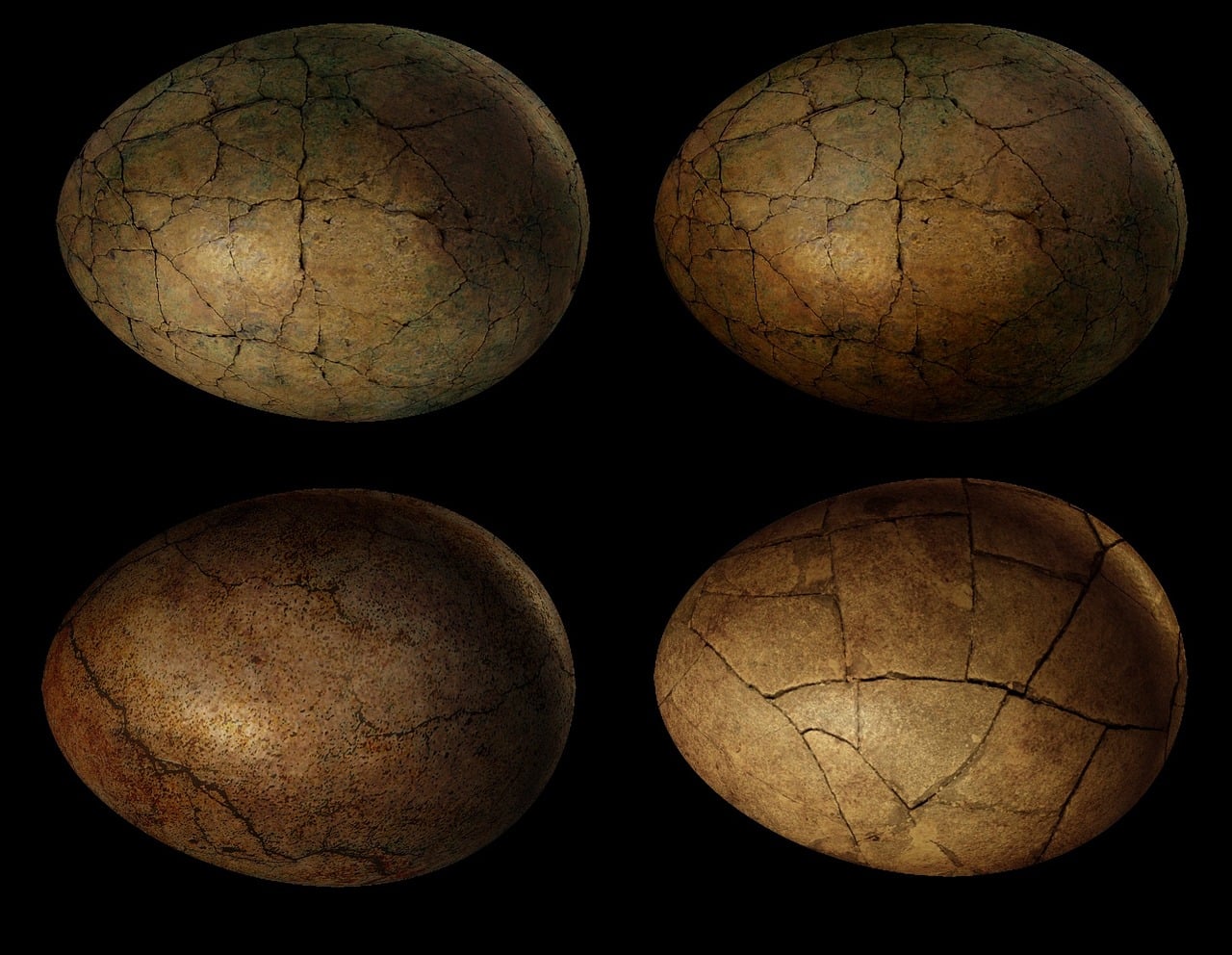While the majority of dinosaur eggs were buried in hopes of protecting their offspring, there were a number of species that built nests and took care of their offspring similar to how modern birds do today.
The information regarding this unique form of incubating and taking care of dinosaur eggs comes from a new report that was published Wednesday, and raises some questions as to how exactly animals this large could brood eggs without squashing them.
Kohei Tanaka, a researcher at Nagoya University Museum and lead author of the study in Biology Letters that details the incubation strategy of featured carnivores called oviraptorosaurs, stated to AFP that “Large species may have not sat directly on their eggs…Eggs are arranged in a circular pattern with a large central opening”
“The dinosaurs likely sat in the middle of the nest so that they didn’t crush the eggs,” he continued – speculating that while this process didn’t keep the eggs warm, they did protect them from predators and the elements.
The fact that these dinosaur eggs were protected in a way similar to that which we’ve seen in modern birds isn’t too surprising considering that the majority of modern birds descended from a group of mostly carnivorous dinosaurs known as theropods – all of which are thought to have laid eggs.
However, despite the majority of these creatures reproducing through dinosaur eggs, precious few actually took care of the way in which we see with modern birds – making the brooding from oviraptorosaurs, a collection of several dozen species with a diverse selection of organisms, very important for study.
“The incubation behaviour of birds—such as adults sitting in the nest and possibly brooding—likely evolved from theropod dinosaurs,” said Tanaka. “Our research provides additional evidence.”
The group of dinosaurs known as Oviraptorosaurs lived during the Cretaceous period, which was essentially the 80 million years that led up to the asteroid event that is thought to have wiped out the majority of dinosaur life. They had short snouts as well as beak-like jaws with few or no teeth with some sporting bony crests on their heads. There has also been some evidence that they featured generous plumage.
In addition to the spoke-like arrangement that we saw with the fossilized dinosaur eggs, the composition of the egg shell itself gave us more evidence to back up the theory that these dinosaurs sat close by to the eggs.
The researchers were able to determine that the makeup of the eggs was design in order to support more weight – making the suggestion that dinosaur eggs could be incubated by big dinos more feasible.
Tanaka suggests that dinosaurs as large as 1100 pounds may have been able to incubate their eggs, which would make it possible for a wide range of dinosaur eggs to be developed in such a matter.
As mentioned above, birds of today evolved in part from the group of dinosaurs that may have incubated eggs in this manner, making it not too far fetched that these ancient organisms might have been able to take care of dinosaur eggs in such a manner despite their incredible size. A lot of organisms today have similarities to dinosaurs, but especially birds who have some striking parallels to ancient life.
In the past, it was theorized that the Oviraptorosaurs discovered with these dinosaur eggs had stolen them which gave them the name “egg-thief lizards,” but this new information seems to confirm that the dinosaur eggs could have belonged to them after all.
This new information regarding dinosaur eggs changes the way we think about ancient species, and shows that they may be even more similar to modern birds than we previously thought. While there are no immediate applications that this research lends itself to, it will better inform scientists as we find more evidence in the future, lending credence to the suggestion that found eggs may actually belong to these dinosaurs.
The fact that these dinosaur eggs were so carefully looked after when the trend of the majority of species was to just bury them and hope for the best may also explain why the species were so successful and were able to give rise to a bevy of modern birds. It turns out that taking care of offspring generally leads to better results, making the care taken in looking out for the dinosaur eggs well worth the effort for those dinos.





